How to build the perfect model railway
- Published

The model rail club set about recreating Alloa Station as it would have looked 60 years ago
The passenger train pulls away from the station, picking up speed as it passes a busy bowling green and people relaxing on deckchairs.
A short distance away, a man stands on a bridge watching a soot-covered locomotive pulling wagons laden with coal.
But it's not a scene you will come across anywhere on your travels - because none of it is real.
This is a miniature world set in central Scotland 60 years ago.
'Alloa' was recreated in painstaking detail from photographs and plans
A small team of model rail experts took five years to recreate Alloa Station and its surroundings circa 1960 in the finest detail.
Since making its debut at a model rail exhibition in 2008, 'Alloa' has picked up numerous awards around the country.
The 34ft-long 1:76 finescale layout was built from scratch by members of the Glasgow-based Scottish Region Study Group (SRSG).
Using old photographs and plans, they painstakingly recreated everything from the time - including the signals, points, track, platforms, buildings and scenery.
Even the trains are in keeping with the era.
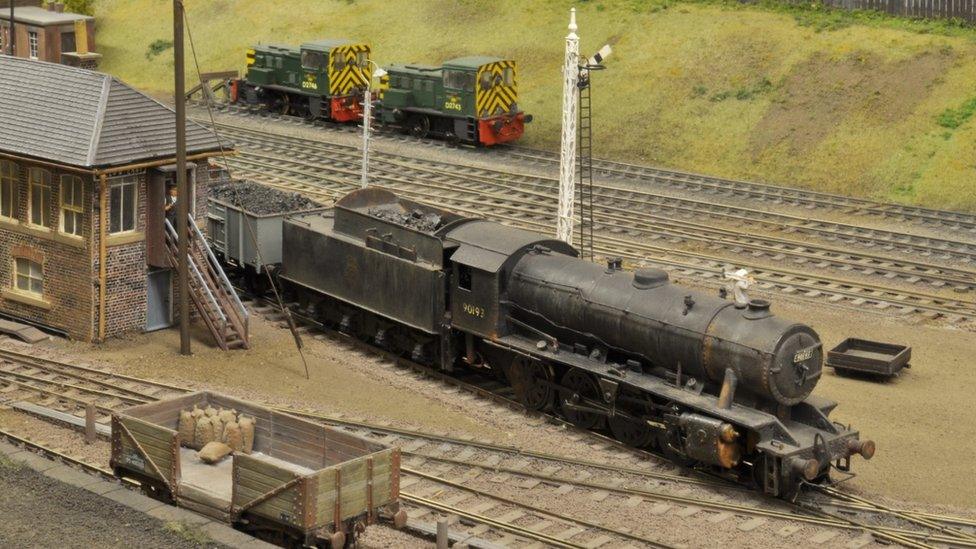
The trains are weathered and real coal is used to give the layout as authentic a look as possible
SRSG member Davy Scott points at one engine and reveals it is carrying real coal in its tender.
He says: "It's one of the few things that you can scale down by putting it in a bag, hitting it with a hammer and crushing it until it's the right size.
"We also repainted and weathered the locomotive to make it look much more realistic - railway engines only had a shiny finish when they came out of the works on day one."
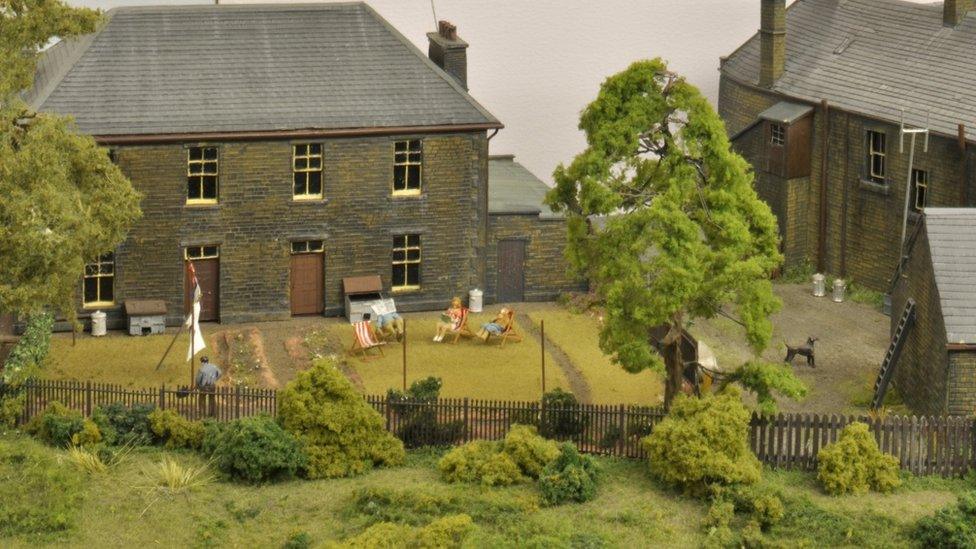
'Alloa' residents are seen relaxing in their back garden
The quest for perfection stretches to the tiny human figures seen dotted around the layout.
Although they were shop bought, many were modified and repainted to fit in with their surroundings.
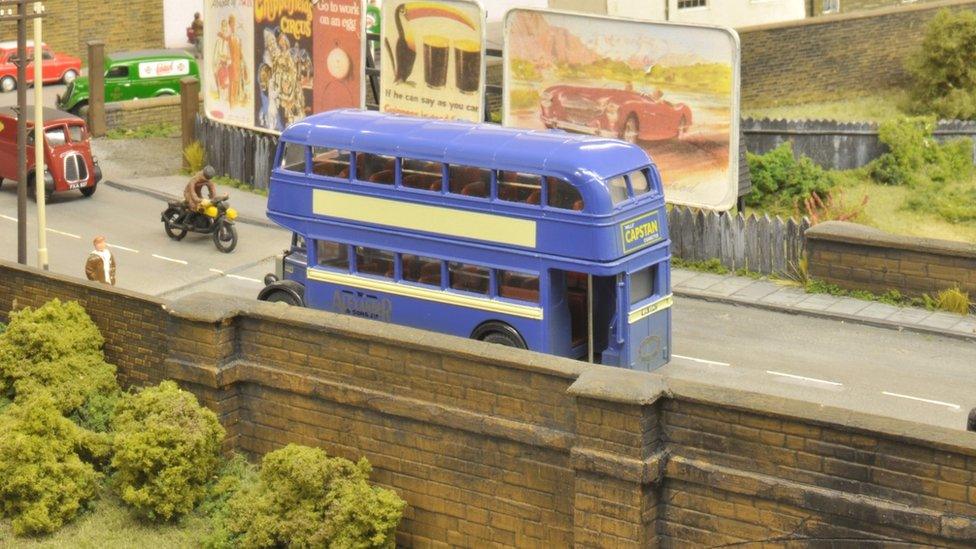
The layout includes period vehicles and adverts on a bridge over the track
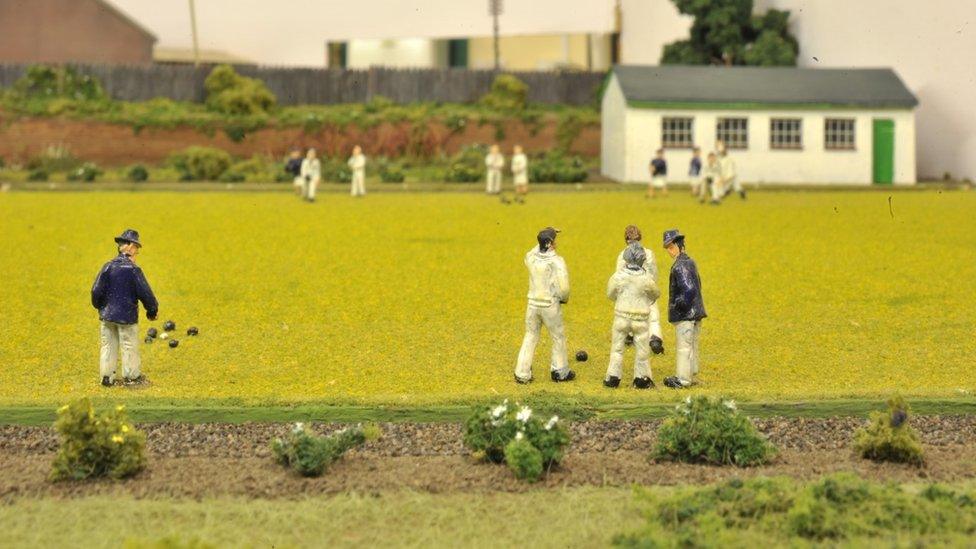
The set has a bowling green, complete with players
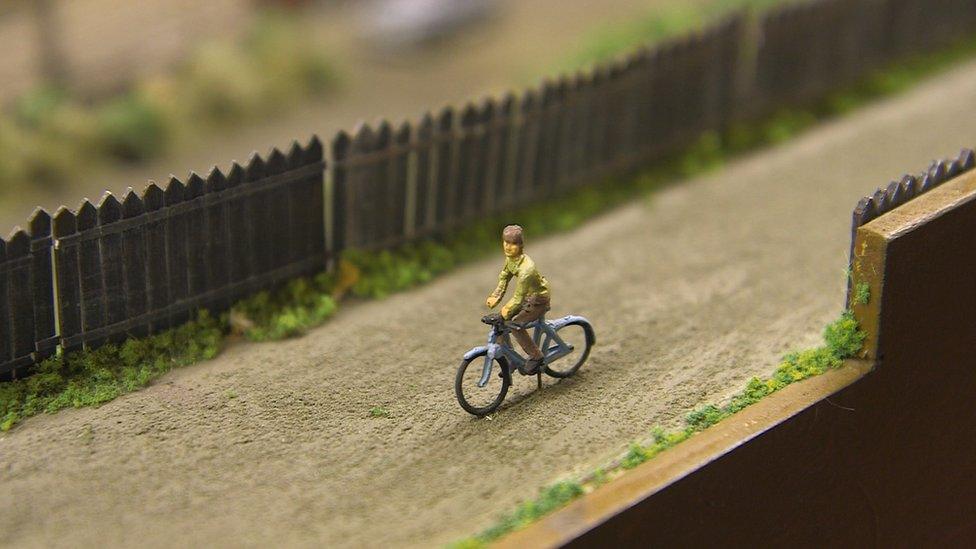
Fine details include a figure cycling near the track
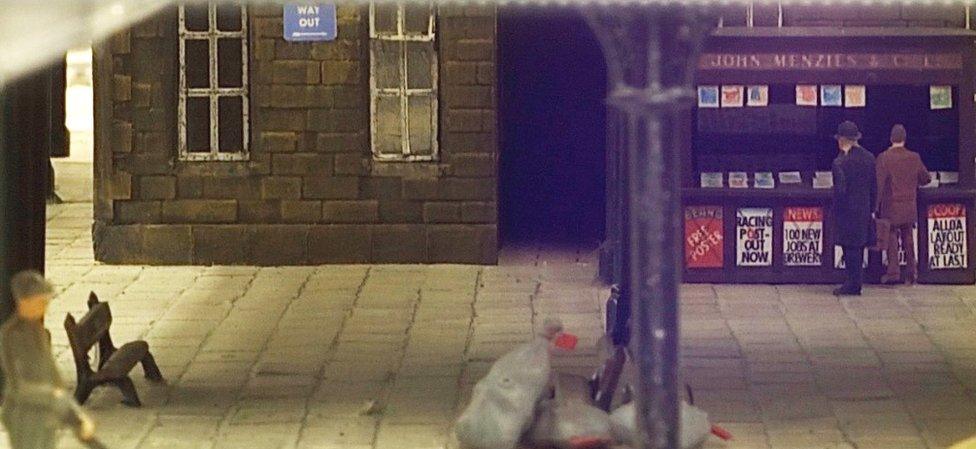
The 'Alloa' layout includes people standing at a newsagent next to the platform

There's even a washing line with laundry on the set
Fellow member David Franks says the high end of the hobby, which involves building finescale bespoke layouts from scratch rather than putting together a ready-to-run set, requires a wide range of skills.
"It's the only hobby I know where you learn joinery, electronics, electrics, engineering, architectural skills, research - you name it," he says.
"It can be a labour of love but then any hobby can be like that - restoring classic cars, building aircraft and so on."
Journey through Alloa model in 40 seconds
So why do these enthusiasts like to recreate real places from times past?
Davy Scott, 68, says: "I think for older people there's nostalgia - wanting to go back to a world when things were slower.
"In 1960, you could go into Central Station in Glasgow and find it was fairly modern - it had electric trains - but some suburban stations were still gas lit in those days - it was like going back to Victorian times."
SRSG is one of 31 clubs in the Association of Model Railway Societies in Scotland, which is set to hold its annual Model Rail Scotland exhibition, external at Glasgow's SEC.
Model Rail Scotland publicity manager Colin Rae says each club has its own approach to the hobby.
He says: "Model rail is whatever you want it to be - whether it is a train set you wish to just take out of the box and run it for a few weeks, or you are into building a much more sophisticated layout.
"It might be totally fictitious, or something like Alloa which is based on an actual place."
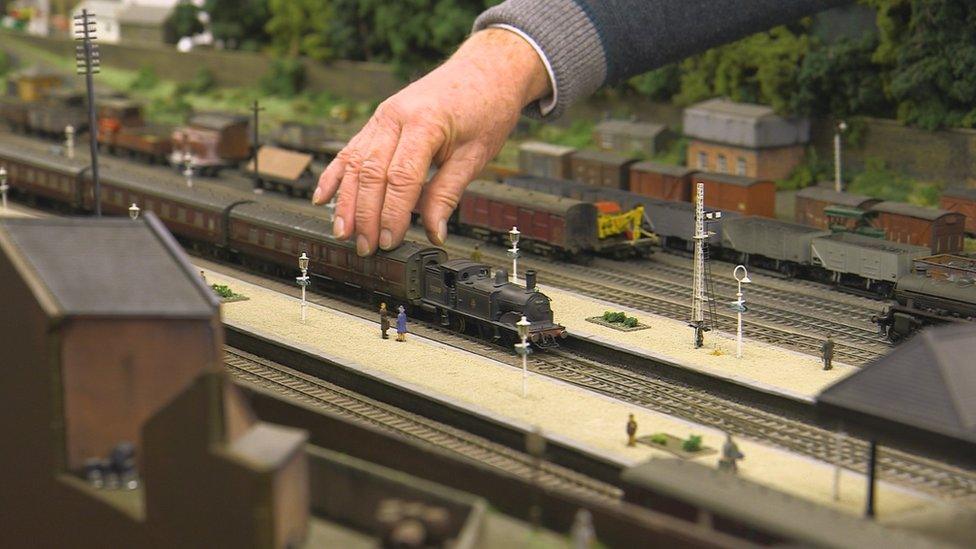
This picture gives an idea of the scale of the Alloa layout
Colin adds: "I think the reason people get so passionate and involved in model railway is that it is a great escapism - you are taking yourself into that little world or diorama that you have created.
"It takes you away from the hustles and bustles of the quite hectic lives we tend to lead."
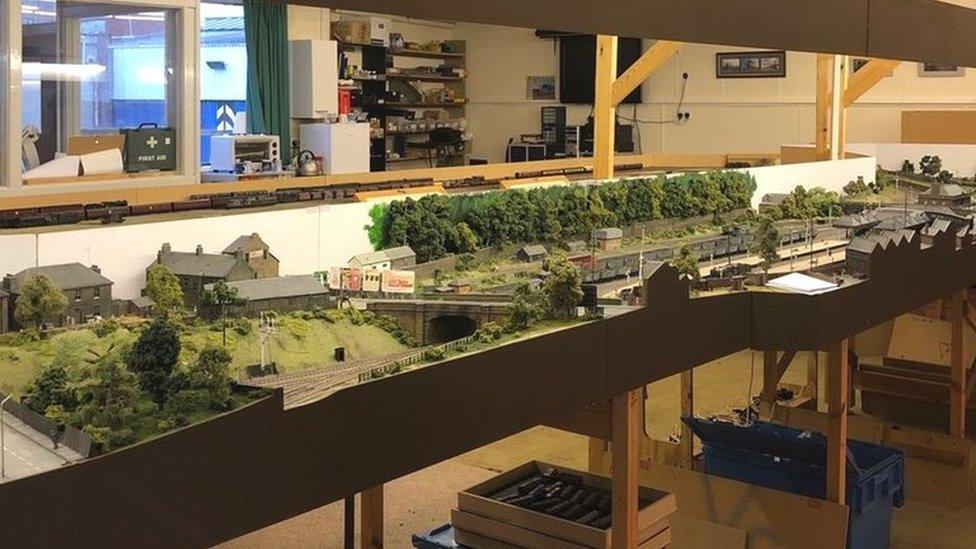
'Alloa' took five years to build
Model Rail Scotland organisers are expecting 15,000 people to attend the three-day event, which starts on Friday.
'Alloa' won't be there this year, but more than 50 layouts will be on display, including one from Aberdeen Model Rail Club which won The Great Model Railway Challenge on Channel 5 last year.
Some of the layouts - including 'Great Endon' - have never been shown in Scotland before, while 'New Bryford' by Mick Bryan and 'Wansbeck Road 'by Mick Simpson are making their last ever appearance at a UK model railway show.
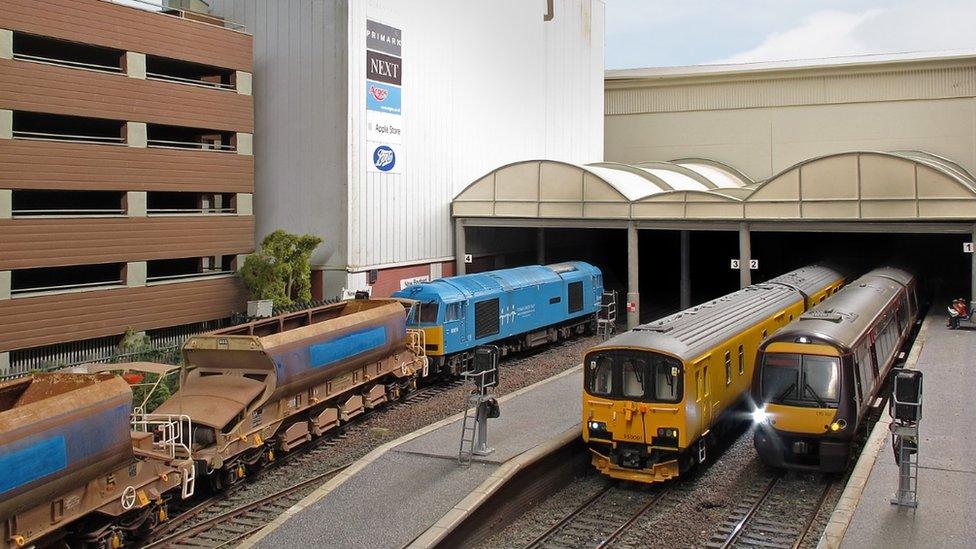
'New Bryford' will be making its last appearance at a UK model railway show this weekend in Glasgow
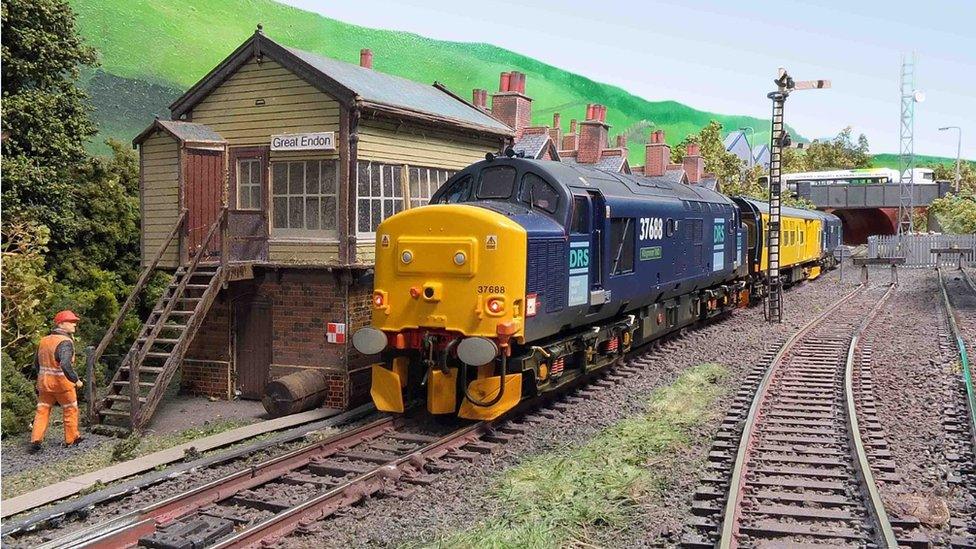
'Great Endon' will be exhibiting in Scotland for the first time at the Model Rail Scotland event
Meanwhile, the Scottish Region Study Group has started on its latest big project - recreating a 40ft-long finescale version of Larbert station in central Scotland in the 1960s.
It has taken 18 months so far and members expect it to take several more years before it is ready.
In the meantime, they continue to tweak the Alloa layout, adding fine details as more information about the station and its surroundings become available.
Davy Scott says: "Alloa was first exhibited in 2008 but it is never really finished. It may look complete, but there's always something needing done or something you think you can do better."
All pictures subject to copyright